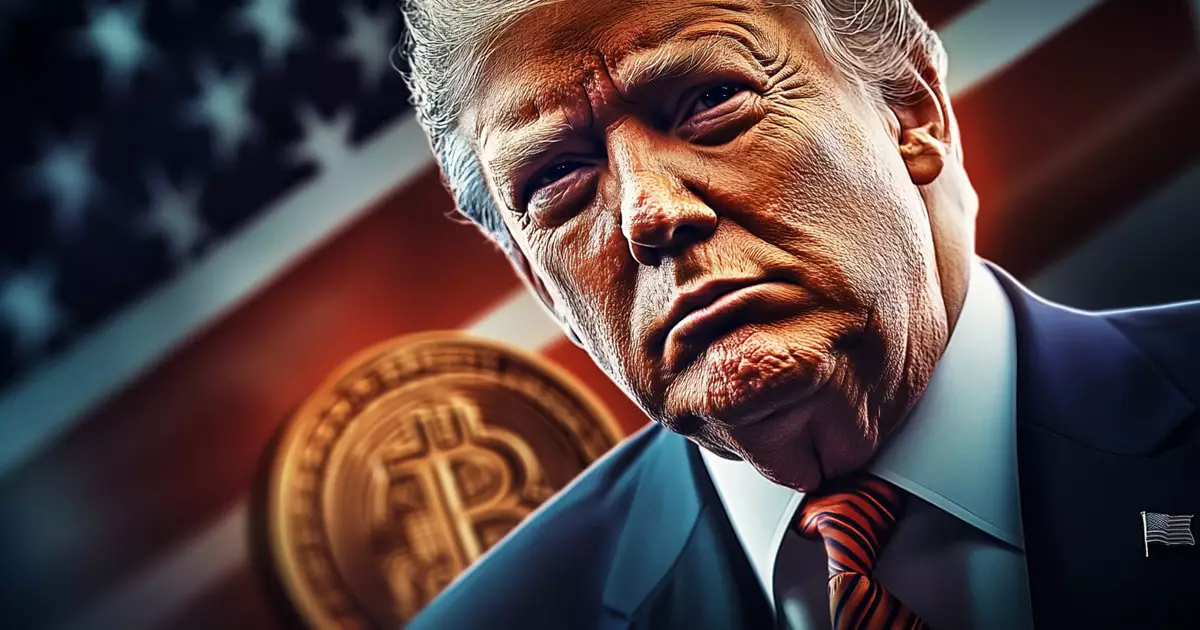The delicate tapestry of the cryptocurrency ecosystem has caught the attention of political leaders seeking to mold the future regulatory landscape. In a recent development, the Trump administration appears to be reconsidering its strategy for engaging with the crypto industry, contemplating a move from a structured council to informal summits with key industry figures. This subtle shift, as reported on February 13, reflects the complexities of cryptocurrency regulation and the fragmented nature of the industry itself.
Whereas the initial proposition involved the establishment of a formal council dedicated to tackling regulatory challenges, the new model emphasizes flexibility through conversational engagements. Reports suggest that these proposed summits will cover pivotal topics such as banking, payments, data centers, and Bitcoin mining. By convening a rotating group of leaders from the crypto sphere, the intention is to foster discussions tailored to specific issues affecting diverse sectors within this rapidly evolving market.
The fragmentation of the crypto industry presents a significant challenge when it comes to creating effective and encompassing regulations. With various factions vying for dominance, including centralized and decentralized entities, Bitcoin maximalists, and their altcoin counterparts, achieving consensus can often feel like an uphill battle. The proposed summits aim to create an environment where representatives from different backgrounds can share insights and contribute to the dialogue on pressing concerns.
The need for collaboration among varied stakeholders cannot be overstated. Engaging relevant parties—such as exchanges discussing trading issues, miners addressing operational hurdles, and wallet providers concerned with self-custody—could yield a more nuanced understanding of the multi-faceted nature of the crypto industry. It could pave the way for actionable policy recommendations that consider the diverse views and interests of those involved.
While the pivot towards informal summits has garnered some support as a pragmatic and adaptive approach, responses within the industry have been decidedly mixed. Enthusiasts of the new format argue that it provides an opportunity for in-depth discussions led by subject-matter experts, thereby ensuring that the right voices are heard. However, skeptics raise concerns that such gatherings may simply act as a mechanism to sidestep deeper conflicts, offering an illusion of engagement rather than a meaningful pathway toward policy development.
One particularly controversial viewpoint suggests that such informal engagements may prioritize the administration’s interests over genuine regulatory advancement, leading to suspicions about underlying motives. With the Trump administration’s past connections to projects like a memecoin and involvement in the decentralized finance (DeFi) sphere through ventures such as World Liberty Financial, questions about the integrity of these summits linger on the horizon.
This transition from a structured council concept to informal discussions is noteworthy given Trump’s initial campaign plans, where he envisioned a presidential council that would collaborate with regulatory bodies to create a robust framework for the crypto market. The original proposal, codified through an executive order known as the “Presidential Working Group on Digital Asset Markets,” aimed not only to map out regulatory strategies but also to evaluate the potential for establishing a digital asset stockpile.
The early interest from major crypto firms—like Coinbase, Ripple, and Kraken—suggested that a formal council could harness the substantial expertise these companies possess. However, as the administration now embraces a more fluid model, the fundamental question remains: will these informal summits cultivate a productive dialogue that yields concrete regulatory advancements, or will they devolve into inconclusive exchanges that further highlight the industry’s divisions?
The road ahead for crypto regulation is fraught with uncertainty. As the Trump administration adopts a more conversational tone with industry leaders, the effectiveness of this strategy remains to be seen. Informal summits hold the potential to foster collaboration, but the risk of superficial engagement—without significant positive outcomes—looms large.
As stakeholders observe these developments, the crypto community must remain vigilant, advocating for sincere dialogues that prioritize meaningful policy reforms. Only time will reveal whether this new approach will ultimately serve the evolving landscape of cryptocurrency, or if it stands as merely a chapter in an ongoing saga of regulatory adaptation.

